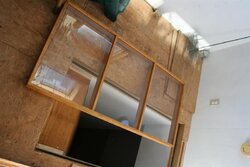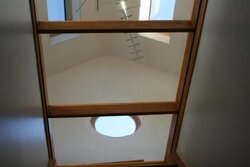Centrally located Isle Royale in a 2000 Sq ft 250 year old house. Very little, if any insulation in the walls. 3 Bay windows, 26 regular sized windows. Partially insulated attic.
I plan on completely sealing the front door, as it's never used and that front foyer is definitely the worst air leak in the house. You can feel the breeze leaving the house through it.
I currently have enough shrink-wrap style plastic for some of the windows, and 6 mil non-shrink plastic for the rest. I plan on caulking/siliconing the windows that are leaking as well. I have a can of great stuff, but I don't think I have any gaps big enough to warrant its use. I'm wondering just how much do these steps usually help? Will I be disappointed after all the effort I go through with minimal noticeable results, or will it be shockingly toasty after I finish all this? Also, is the shrink style more effective than the non-shrink? I can see why it would be, as it gets a better seal, however, the other stuff I have is thicker, and puts a cushion of air between the window and the plastic, so I would think that also would help insulate. Any responses or other heat saving tips would be appreciated.
I plan on completely sealing the front door, as it's never used and that front foyer is definitely the worst air leak in the house. You can feel the breeze leaving the house through it.
I currently have enough shrink-wrap style plastic for some of the windows, and 6 mil non-shrink plastic for the rest. I plan on caulking/siliconing the windows that are leaking as well. I have a can of great stuff, but I don't think I have any gaps big enough to warrant its use. I'm wondering just how much do these steps usually help? Will I be disappointed after all the effort I go through with minimal noticeable results, or will it be shockingly toasty after I finish all this? Also, is the shrink style more effective than the non-shrink? I can see why it would be, as it gets a better seal, however, the other stuff I have is thicker, and puts a cushion of air between the window and the plastic, so I would think that also would help insulate. Any responses or other heat saving tips would be appreciated.



